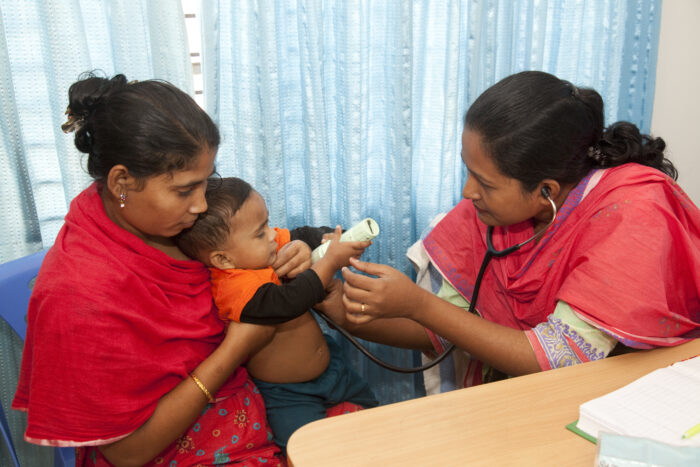Maternal, Newborn and Child Health
Introduction
Preventing maternal, newborn, and infant deaths, particularly in LMICs where many of them occur, requires direct intervention to improve access to affordable, high-quality health care. Uneven access to these services impedes improvements in maternal and newborn survival 1. Common infectious diseases like pneumonia, malaria, and diarrhea are preventable and treatable, yet they still take the lives of millions of children and mothers every year 2. Underweight infants hospitalized with an acute illness are at particularly high risk of death.
810
Women die daily from preventable childbirth related complications 1.
6,500
Babies die every day in the first month of life, globally 1.
48 Million
Children under age 5 are projected to die between 2020 and 2030 1, half of them newborns.
Given the state of newborn and infant health around the world, Gates MRI is working to develop treatments that will help lower the rates of newborn mortality, particularly within LMICs.
B. Infantis Etiology
Infant malnutrition, including undernutrition (wasting, stunting, underweight), can lead to impaired growth, immune and metabolic dysfunction, increased risk of infection, altered development of the central nervous system, and other abnormalities. This represents a significant global public health challenge.
A healthy infant gut microbiome contributes to functions essential to infant growth and development. Increases in potentially pathogenic bacteria can lead to imbalances in the gut microbiome that can play a role in nutrient malabsorption 4 5.

Bifidobacterium longum subspecies infantis (B. infantis) is a common gut bacterium of breast-fed infants younger than 6 months of age in LMICs and has the unique ability to efficiently process human milk oligosaccharides (HMOs) found in breast milk. A decrease in abundance or absence of B. infantis could lead to inadequate HMO processing, elevating intestinal pH and increasing the risk of pathogen overgrowth 6. Infants with severe acute malnutrition have been shown to have lower levels of B. infantis than infants of the same age who are not malnourished 7.
B. Infantis Approach
With the aim of addressing the significant burden of disease experienced by underweight infants in LMICs, the Gates MRI program will build on recently published data from a placebo-controlled study in 62 infants which demonstrated increased B. infantis fecal abundance and improved weight gain in infants who received supplementation with a B. infantis probiotic7. The Gates MRI program will assess the impact of supplementation of different B. infantis strains on underweight infants’ weight gain and gut health.

References
- Maternal and Newborn Health. United Nations International Children’s Emergency Fund. https://www.unicef.org/health/maternal-and-newborn-health
- Maternal and Newsborn Survival. United Nations International Children’s Emergency Fund. https://www.unicef.org/health/maternal-newborn-and-child-survival
- World Health Organization and Food and Agriculture Organization of the United Nations. (2018). https://www.fao.org/3/CA1340EN/ca1340en.pdf
- Casaburi, G. et al. (2021). Metagenomic insights of the infant microbiome community structure and function across multiple sites in the United States. https://pubmed.ncbi.nlm.nih.gov/33479326/
- Duar, Rebecca M. et al. (2020). Integrating the Ecosystem Services Framework to Define Dysbiosis of the Breastfed Infant Gut: The Role of B. infantis and Human Milk Oligosaccharides. https://www.ncbi.nlm.nih.gov/pmc/articles/PMC7171047/
- Chichlowski, M., Shah, N., Wampler, J. L., Wu, S. S., & Vanderhoof, J. A. (2020). Bifidobacterium longum Subspecies infantis (B. infantis) in Pediatric Nutrition. https://pubmed.ncbi.nlm.nih.gov/32481558/
- Barratt, M. et al. (2022). Bifidobacterium infantis treatment promotes weight gain in Bangladeshi infants with severe acute malnutrition. https://pubmed.ncbi.nlm.nih.gov/35417188/
LMICs: low-and-middle-income countries, as defined by the World Bank.
Other Research Priorities
Learn more about our research programs at the Gates MRI by clicking on the icons.
Tuberculosis
An infectious disease caused by Mycobacterium tuberculosis (Mtb) bacteria, spread by bacteria expelled into the air

 Maternal, Newborn and Child Health
Maternal, Newborn and Child Health